What's New
Displaying results 2211 - 2220 of 4911
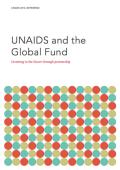
Resource | Publications,
The global commitment to ending the AIDS epidemic represents an unparalleled opportunity to end one of the most devastating modern-day health challenges. Over the past three decades, historic progress has transformed the AIDS response. More than 18 million people globally are receiving life-saving HIV treatment, and the world is on track to eliminate mother-to-child transmission of HIV. However, more than 2 million people are newly infected with HIV annually and, in 2015, more than a million people died from HIV-related causes. Strategic partnerships such as that of UNAIDS and the Global Fund to Fight AIDS, Tuberculosis and Malaria (the Global Fund) are vital if we are to Fast-Track the AIDS response to end AIDS as a public health threat by 2030.

Resource | Publications,
Countries in the WHO Western Pacific Region have made considerable progress in preventing and controlling the HIV epidemic. Governments have scaled up access to life-saving antiretroviral therapy, and new HIV infections in the Region have decreased by 20% between 2000 and 2015. Despite this progress, many challenges remain on the path to ending the HIV epidemic. Only an estimated 47% of people living with HIV (PLHIV) in the Region had access to antiretroviral therapy at the end of 2015. The number of new HIV infections remained unchanged since 2008 and even increased markedly among men who have sex with men (MSM), while it remained high among people who inject drugs (PWID) in the absence of harm reduction programmes.
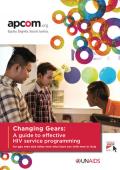
Resource | Guidelines,
APCOM has launched a new MSM framework guide for effective HIV service programming at the 21st International AIDS Conference’s MSM Pre-Conference, Action + Access: Rights and Demands of Gay and Bisexual Men in the HIV Response, hosted by MSMGF on July 16 in Durban, South Africa. "Changing Gears: a guide to effective HIV service programming for gay men and other men who have sex with men in Asia", as the new framework is titled, aims to strengthen the on-going national and regional efforts to revive the HIV response for gay and bi men and other men who have sex with men (MSM) in Asian countries. The guide was developed with technical assistance from UNAIDS Regional Support Team for Asia and the Pacific and serves as a resource to design or assess comprehensive HIV services for MSM in Asian cities, territories, regions or countries, incorporating recent innovations and the latest science on what works.

Resource | Presentations,
Objectives of the Framework
- Introduce the latest science and innovations in HIV service programming for MSM
- A source for advocacy with donors and policy makers
- Provide checklists to see the extent to which HIV service programming for MSM is up-to-date
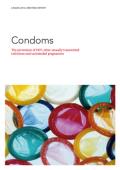
Resource | Publications,
Condoms are a highly effective and widely used method to prevent transmission of HIV and other sexually transmitted infections and unintended pregnancies.
A global consultation meeting was held in Geneva, Switzerland, from 6 to 7 November 2014, to reaffirm the critical role of male and female condoms as part of combination HIV prevention, to shape an agenda to scale up condom promotion and distribution, and to identify strategies to overcome bottlenecks in scaling up.
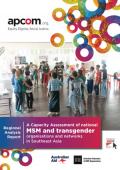
Resource | Publications,
The JumpStart Rap App was used to assess the organisational capacity of five MSM and transgender networks and organisations in Southeast Asia. The findings indicate capacity gaps in all 11 organisational and programmatic components of the Rap App, although the five organisations vary widely in their reach, capacity and technical support needs.
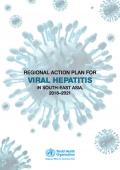
Resource | Publications,
Viral hepatitis now ranks as the seventh leading cause of mortality worldwide. Although mortality due to communicable diseases has declined globally, the absolute burden and relative ranking of viral hepatitis as a cause of mortality has increased between 1990 and 2013.
The regional action plan's goal is to eliminate viral hepatitis as a major public health threat in the Region by the year 2030. It aims to provide an actionable framework of evidence-based, priority interventions to support national responses for prevention, control and management of viral hepatitis.
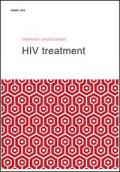
Resource | Reviews and Snapshots,
The world has embraced the UNAIDS 90–90–90 treatment target, whereby 90% of people living with HIV know their HIV status, 90% of people who know their HIV-positive status are accessing antiretroviral treatment, and 90% of people on treatment have suppressed viral loads. By reaching the 90–90–90 treatment target by 2020, the world will be firmly on track towards ending the AIDS epidemic by 2030.
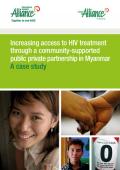
Resource | Publications,
This case study describes the model and outcomes of the public private partnership (PPP) that has been implemented by the Alliance since 2009 in Yangon, Myanmar. This information and evidence is essential to support and guide possible expansion and replication of this model in efforts to decentralise ART delivery in other contexts, whilst easing the burden on public health facilities. It highlights the collaborative role of the partners; high impact strategies that have contributed to the success of the model; lessons learnt, best practice and patient outcomes; and concludes with recommendations regarding how this model may be improved.
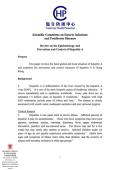
Resource | Reviews and Snapshots,
This paper reviews the latest global and local situation of hepatitis A and examines the prevention and control measures of hepatitis A in Hong Kong.
Hepatitis A is inflammation of the liver caused by the hepatitis A virus (HAV). It is one of the most frequent causes of foodborne infection. It occurs sporadically and in epidemics worldwide. Every year there are an estimated 1.4 million cases of hepatitis A worldwide. Regions with high HAV endemicity include parts of Africa and Asia. The disease is closely associated with unsafe water, inadequate sanitation and poor personal hygiene.





